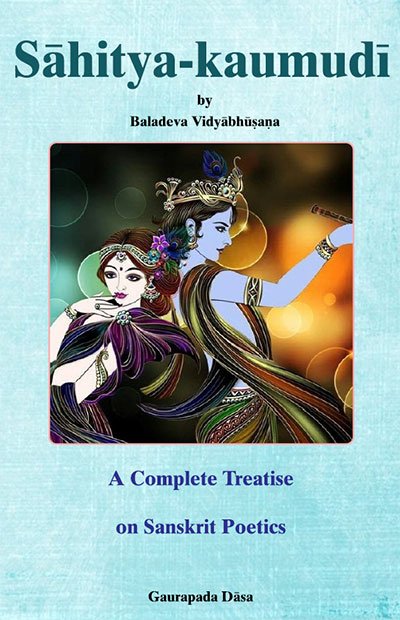Sahitya-kaumudi by Baladeva Vidyabhushana
by Gaurapada Dāsa | 2015 | 234,703 words
Baladeva Vidyabhusana’s Sahitya-kaumudi covers all aspects of poetical theory except the topic of dramaturgy. All the definitions of poetical concepts are taken from Mammata’s Kavya-prakasha, the most authoritative work on Sanskrit poetical rhetoric. Baladeva Vidyabhushana added the eleventh chapter, where he expounds additional ornaments from Visv...
Text 7.61
(9) [This is an example of patat-prakarṣa (falling eminence):]
प्रोज्ज्वल-ज्वलन-ज्वालाविकटोरु-सटा-च्छटः |
श्वासाक्षिप्त-कुल-क्ष्मा-भृत् पातु वो नर-केशरी ||
projjvala-jvalana-jvālāvikaṭoru-saṭā-cchaṭaḥ |
śvāsākṣipta-kula-kṣmā-bhṛt pātu vo nara-keśarī ||
projjvala—blazing; jvalana—of a fire; jvālā—like an illumination; vikaṭa—is dreadful (formidable); uru—large; saṭā—of the mane; chaṭaḥ—He whose mass; śvāsa—with an exhalation; ākṣipta—are cast away; kula-kṣmā-bhṛt—He by whom mountain ranges (kṣmā-bhṛt = supporters of the Earth); pātu—may He protect; vaḥ—all of you; nara-keśarī—[partially] a man and [partially] a lion.[1]
The mass of His broad mane is formidable because it resembles the illumination of a blazing fire. He can cast aside a mountain range with His exhalation. May He who is half-man and half-lion protect you all. (Sāhitya-darpaṇa 7.8)
atrānuprāsa-prakarṣaḥ krameṇa patitaḥ.
In this verse, the eminence of alliteration gradually decreases.
Commentary:
The first line features an alliteration of jval. The second line contains an alliteration of ṭ. The third line has an alliteration of k. The fourth line is devoid of alliteration.
Footnotes and references:
[1]:
Compounds such as nara-siṃha where each word has the sense of ‘partially’ are formed by the rule: kiñcittvena vibhāge gamye’pi (Hari-nāmāmṛta-vyākaraṇa 926); ktena nañ-viśiṣṭenānaṣ (Aṣṭādhyāyī 2.1.60).
